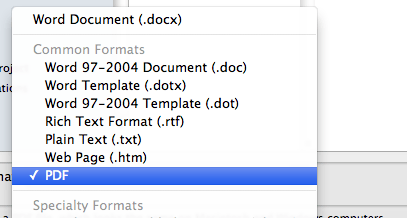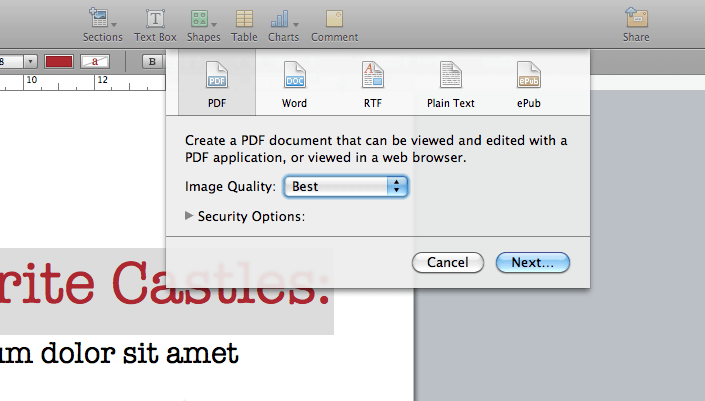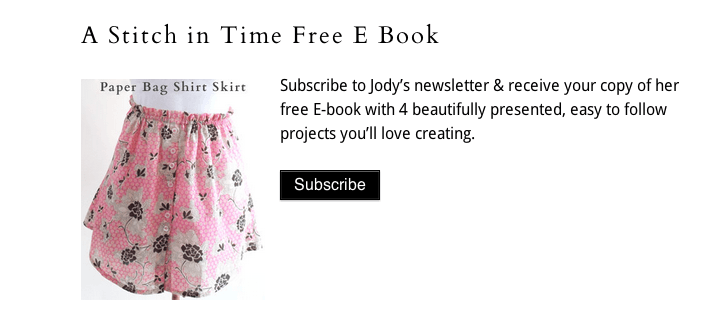E-books are a great way to engage people with your business and draw traffic to your website. You can use them to entice people to sign up to your newsletter or blog, or if you’re selling the e-book, generate a passive income. The amount of people downloading e-books to their mobile and smart devices is quickly on the rise so it’s a great time to start thinking about how you can use e-books to capture the attention of your target audience. Although e-books come in many different publication types with the most common being PDF, EPub and Mobi, this post will focus on the PDF format for your e-book because it’s quick, easy to make and can be read across virtually all tablets and smart phones.
1. Write suitable content
Before you start your e-book, think carefully about what you want to write about. You can present tutorials, business tips, collate long articles of your work or digitally reproduce a whole book. Make sure the content is suitable for your audience, and something that they consider useful. This way you’ll be sure to get the engagement you want on your site. A good idea is to do some research into other businesses similar to yours and look at the type of e-books they’re making.
2. Get it proofed
Before you publish it to you website, make sure you have someone else read the e-book. Get them to check it on a tablet, smartphone or kindle. This will help you ensure that the content is suitably laid out and presented in a way that makes sense in context to the reader. It also ensures it’s free from spelling errors and the writing flows properly. Send a copy to your editor, a colleague or trusted peer who can give you clear feedback.
3. How to make your e-book
What you’ll need:
- Image editing software
- Word processing software
If you’re including images in your e-book, first make sure you’ve optimised your images properly for the web to reduce file size and enable it to be downloaded quickly. Good programs are:
- Photoshop (now available as a monthly subscription, this makes it much more affordable)
- Gimp and the save for web plugin (free software PC and Mac compatible)
These programs run on either Mac or PC and use the ‘save for web’ options in both to optimise your images for web. Tools for writing and creating your e-book There are plenty of programs that can help you design and make an e-book, but for a simple PDF, you can just use the following programs:
- MS Word (Mac and PC)
- Pages (Mac only)
Create your document in Word or Pages and insert all your optimised images. Both these programs give you templates so you can choose something more interesting than the default document layout. Once you’ve finished you can create your e-book in the following ways: To create your e-book in Word you simply select File > Save As and select the ‘PDF’ format from the drop down menu. This will then save a copy of your file as a PDF.  Pages is a little different, and in fact gives you the option to save your content as ePub. However to convert your content into PDF all you do is simply select File >Export and select PDF. You would have already optimised your images so the document isn’t too big, so make sure you choose ‘image quality’, best.
Pages is a little different, and in fact gives you the option to save your content as ePub. However to convert your content into PDF all you do is simply select File >Export and select PDF. You would have already optimised your images so the document isn’t too big, so make sure you choose ‘image quality’, best.  Of course if you want something more advanced, Adobe InDesign has incredible features to make complex PDF’s, but is a steep learning curve if you’ve never used Adobe software before.
Of course if you want something more advanced, Adobe InDesign has incredible features to make complex PDF’s, but is a steep learning curve if you’ve never used Adobe software before.
4. Check your file size
Make sure the file you’ve saved is no more than 2-3MB in size. This way people can download it quickly without any issues and won’t take up too much space on their tablet or smartphone.
5. How to distribute
There’s a couple of ways you can distribute your e-book on your website or blog. 1 – Sell it on your site. If you choose this option you can add your e-book to your site as a product for people to buy. To get an idea of what to charge, have a look at similar e-books in your industry and check out how they are priced. 2 – Offer it for free in return for newsletter signup. This is a great way to build your subscriber list and building engagement with your business. It’s a simple process of uploading the e-book to your server or website (if you use a CMS like WordPres) and then add the link in your subscriber confirmation email. People can automatically download the e-book once they’ve confirmed their subscription. 3 – Give it away. This isn’t common but it might be useful as a timed promotion to draw more traffic to your site, it could be a good way to launch a new website, product or blog. [hr] Recently Shortie Designs worked with the talented artist Jody Pearl on her new website Sew Outside the Lines. The e-book is automatically sent to people who sign up and subscribe to the mailing list. This technique has dramatically increased the subscriber list which has helped boost workshop bookings and engagement with Jody’s stunning textile work.  If you’d like to talk to Shortie Designs about ways to engage your audience with your website, feel free to contact us with some details.
If you’d like to talk to Shortie Designs about ways to engage your audience with your website, feel free to contact us with some details.
How have you used e-books on your website to boost engagement with your business?
Use the comment box below to join in the conversation.
